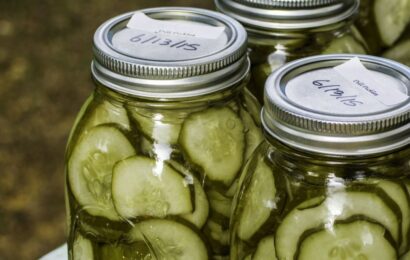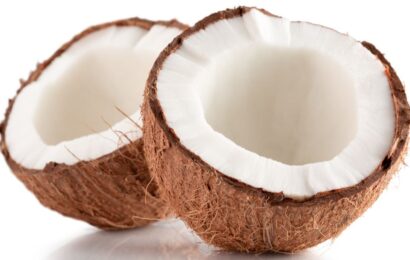A lot of misinformation surrounds diabetes, especially when it comes to sugar. For so many years, people with diabetes were told to avoid sugar in an effort to manage blood sugars. But blood sugar management is much more complex, and we now know that sugar, while certainly something to limit, isn’t completely off limits.
But how do you make sense of sugar in terms of what types and how much is “allowed”? What about the sugar found in fruit — is it OK to eat? Let’s clear up some of that confusion and set the record straight!
Eating sugar causes diabetes.
Fiction
Type 1 diabetes occurs due to a malfunction of the immune system. When this happens, the immune system destroys the cells in the pancreas that make insulin. The exact cause of type 1 diabetes isn’t known, but researchers think that perhaps viruses or genetics are the culprit. Type 2 diabetes also runs in the family and is a condition of insulin resistance, which means the body can’t use its own insulin properly. Being overweight and leading an inactive lifestyle are the main contributors to type 2 diabetes. Indirectly, sugar may increase the risk of type 2 diabetes, especially sugar in the form of sweetened drinks, such as soda and juices. And sugar-foods are high in calories, which can cause weight gain. But sugar is not thought to be a direct cause of diabetes.
To get cutting-edge diabetes news, strategies for blood glucose management, nutrition tips, healthy recipes, and more delivered straight to your inbox, sign up for our free newsletters!
Foods can contain “hidden” sources of sugar.
Fact
Table sugar, also called sucrose, are just a couple names for sugar. But sugar wears many hats, and despite how “natural” it may sound – like “organic blue agave nectar” – when it comes down to it, sugar is sugar. Honey, molasses, corn syrup, cane syrup, dextrose, maltose, and invert syrup are only a few of the ingredients that, underneath any hype, are really just sugar.
Sugar is different than carbohydrate.
Fiction
Sugar is a type of carbohydrate. Some people categorize carbohydrate into one of two groups: simple and complex. Simple carbs are things like table sugar, candy, and soda, as well as juice and fruit. Complex carbs are starches, and examples are bread, pasta, rice, and cereal. The difference in these two types has to do with the chemical structure, as well as how quickly they’re digested and absorbed. The simple carbs are digested pretty fast, although refined complex carbs (think white bread) are also digested quickly. The bottom line, though, is that sugar is a type of carbohydrate, just as fruit, bread, rice, and pasta are. You can fit a sweet treat into your meal plan as long as you count the grams of carb and limit the portion.
Avoid fruit because it contains sugar.
Fiction
There’s no doubt that sweetened drinks, a candy bar, or a handful of cookies offer little in the way of nutrition. But some foods naturally contain sugar and DO provide a lot of nutrition: fruit is a good example. It contains both glucose and fructose, as well as a host of vitamins, minerals, phytonutrients, and fiber that we need for good health. The kind of sugar found in fruit (and even in some vegetables) is not the refined sugar that is found in soda or kid’s cereals. Yes, fruit contains carb, so you’ll need to watch your portions and count those carb grams. Some fruits are lower in carb, such as berries, peaches, and watermelon, so these can be better choices than bananas or grapes. Go for fresh or frozen fruit when possible, and shy away from fruit juice (which often contains added sugar) unless you need it to treat a low blood sugar.
Too much sugar can increase the risk of dying from heart disease.
Fact
We tend to think of sugar as primarily impacting diabetes, but researchers have found that eating too much sugar can make it more likely to die from heart disease. In a 2014 study published in the journal JAMA Internal Medicine, subjects who consumed 25% or more of daily calories from sugar were more than twice as likely to die from heart disease compared to those consuming less than 10% of calories from sugar.
It’s impossible to know how much sugar has been added to a food or drink.
Fiction
Thanks to recent changes in the Nutrition Facts Label, added sugars are now listed on most labels. The Dietary Guidelines for Americans recommends limiting calories from added sugars to less than 10% of total daily calories. Not only can you see total carbohydrate and total sugars listed in grams, you’ll see added sugars in grams, too. For example, “Includes 7g Added Sugar.” For a quick conversion, every 4 grams of sugar is equal to one teaspoon of sugar.
Want to learn more about eating well with diabetes? Read “Improving Your Recipes: One Step at a Time,” “Top Tips for Healthier Eating” and “Cooking With Herbs and Spices.”





